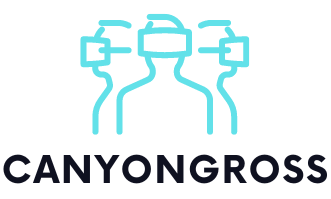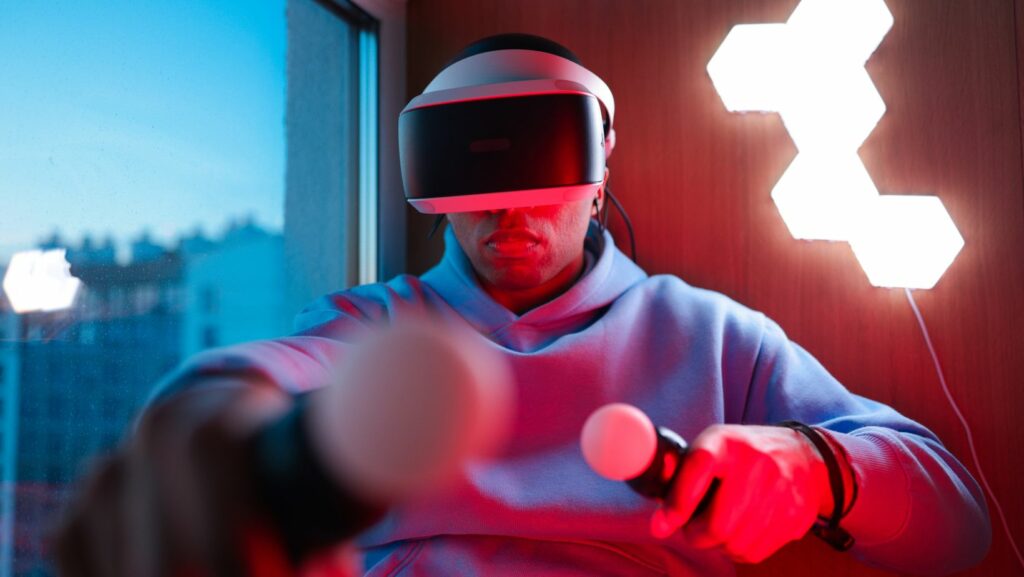Virtual reality software development has revolutionized the way we interact with technology. It’s reshaping industries, from gaming to healthcare, offering immersive experiences that blur the lines between the physical and digital worlds.
In this fast-evolving landscape, staying ahead means embracing cutting-edge tools and techniques. From creating lifelike environments to enhancing user experiences, virtual reality software development requires a blend of creativity and technical expertise.
Virtual Reality Software Development
What Is Virtual Reality?
 Virtual reality (VR) is a technology that simulates a realistic experience in a three-dimensional environment that users can interact with in real-time. It uses computer-generated simulations to create immersive environments that can replicate physical presence in places in the real world or imagined worlds.
Virtual reality (VR) is a technology that simulates a realistic experience in a three-dimensional environment that users can interact with in real-time. It uses computer-generated simulations to create immersive environments that can replicate physical presence in places in the real world or imagined worlds.
- Head-Mounted Display (HMD): The HMD is a crucial component in VR development, as it is the device worn on the head that provides a stereoscopic view of the virtual world. It typically consists of two small screens placed in front of the user’s eyes to create the illusion of depth.
- Tracking System: To ensure real-time interaction in the virtual environment, a tracking system is used to monitor the user’s head movements and adjust the display accordingly. This tracking system can be based on gyroscopes, accelerometers, or external cameras for more precise movement detection.
- Input Devices: VR applications often require specialized input devices for users to interact with the virtual environment. These can include handheld controllers, data gloves, or even body suits equipped with sensors to track movements accurately.
- Software Development Kits (SDKs): Developers use SDKs specifically designed for VR to create applications that can run on different VR platforms. These SDKs provide tools and libraries to assist in building immersive experiences, handling input from devices, and optimizing performance for various hardware configurations.
- Content Creation Tools: Creating 3D models, environments, and interactive elements for VR experiences requires specialized software tools like 3D modeling programs, game engines, and animation software. These tools enable developers to design and build virtual worlds that are engaging and visually stunning.
The Evolution of Virtual Reality Technologies
Milestones in VR Software History
 In the early 1960s, the concept of virtual reality emerged, with Ivan Sutherland and his student developing the first head-mounted display system.
In the early 1960s, the concept of virtual reality emerged, with Ivan Sutherland and his student developing the first head-mounted display system.- The 1990s marked significant advancements with the release of VR systems like the Nintendo Power Glove and Virtuality Group’s VR headsets, paving the way for future developments.
- The early 2000s saw the introduction of VR software applications for military training and flight simulation, expanding the technology’s potential beyond entertainment.
Leading Tools in VR Software Creation
Platforms for Development
Virtual reality software developers leverage various platforms to create immersive experiences. Some of the leading platforms in VR software development include:
- Unity: A widely-used platform for VR development due to its versatility and support for multiple devices. Developers can create interactive experiences with stunning visuals using Unity.
- Unreal Engine: Known for its high-fidelity graphics and robust toolset, Unreal Engine is popular among developers for creating visually stunning VR environments and experiences.
- SteamVR: Developed by Valve Corporation, SteamVR provides a comprehensive set of tools for VR development, offering support for various VR devices and seamless integration with Steam’s distribution platform.
These platforms offer developers the necessary tools and resources to create cutting-edge VR applications across different industries, from gaming to simulation and training.
Popular VR Programming Languages
 In the realm of virtual reality software development, proficiency in specific programming languages is essential. Some of the popular programming languages used in VR development include:
In the realm of virtual reality software development, proficiency in specific programming languages is essential. Some of the popular programming languages used in VR development include:
- C#: Widely used with Unity, C# is a versatile language that enables developers to create sophisticated VR applications with ease. Its object-oriented approach and extensive libraries make it a preferred choice for VR development.
- C++: Known for its high performance and flexibility, C++ is favored for developing complex VR applications that require efficient memory management and system-level access.
- JavaScript: JavaScript is commonly used for web-based VR experiences and interactive content. It allows developers to create VR applications that can run directly in the browser, making it accessible and easy to distribute.
By mastering these programming languages, developers can unleash their creativity and build captivating virtual reality experiences that push the boundaries of technology and engagement.

